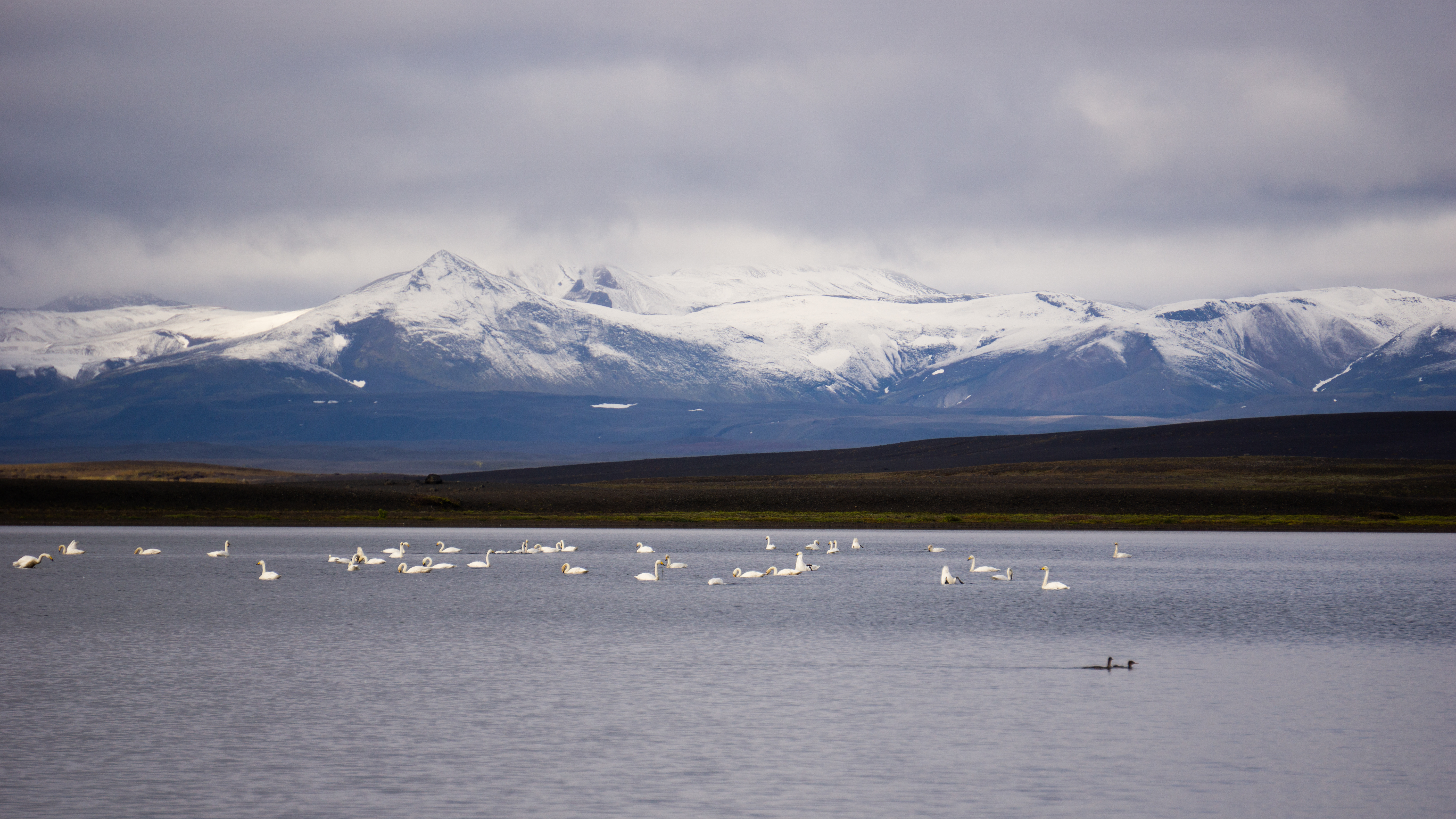Vinna við nýjar heimasíður Umhverfis- og orkustofnunar og Náttúruverndarstofnunar er í gangi. Heimasíða Umhverfisstofnunar er virk á meðan vinnunni stendur. Information in English
About the nature reserve

Þjórsárver is one of the most vast and remote oases in the Icelandic highlands. The wetlands themselves are mostly west of Þjórsá river, south of Hofsjökull and are approx. 600 metres above sea level. Þjórsárver stands out from its harsh environment, and there you’ll find lush and varied floodplains with diverse vegetation. Five of the six habitats considered to have the highest protection value in the mid-highlands are found in the Þjórsárver area, ravine and heathland, willow scrub, low sturnidae, palsa mires and high sturnidae. Þjórsárver has one of the largest permafrost areas in Iceland. In total, 663 species of higher plants, moss and lichens have been found in the area, including species that are on the list of threatened species. 47 bird species have been spotted in Þjórsárver, and up to 27 species have nested in the area, thereof five that are on the threatened list.
Þjórsárver’s uniqueness is primarily found in the interplay of glaciers, water, soil, climate, vegetation and wildlife. Þjórsárver is a part of majestic nature and mostly untouched landscape.
The main part of Þjórsárver and surroundings (375 km2) was protected in 1981. In 1990, the area was put on the Ramsar Convention List (area no. 460) and, as a result, was acknowledged as Wetlands of International Importance Especially as Waterfowl Habitat. The international importance of Þjórsárver in regard to birds is mostly derived from the pink-footed goose nesting area. The nesting of other birds is usually rather sparse, but experts believe that Þjórsárver and its surroundings are of significant importance for the populations of several bird species where Iceland plays a significant role.
During the period from May 1st to June 20th, traffic in and around the vicinity of the pink-footed goose nesting grounds is prohibited, as provided for in Annex II, a map of restricted traffic areas due to pink-footed goose nesting.
On the whole, Þjórsárver’s nature conservation value is considered high, both in Iceland and worldwide.